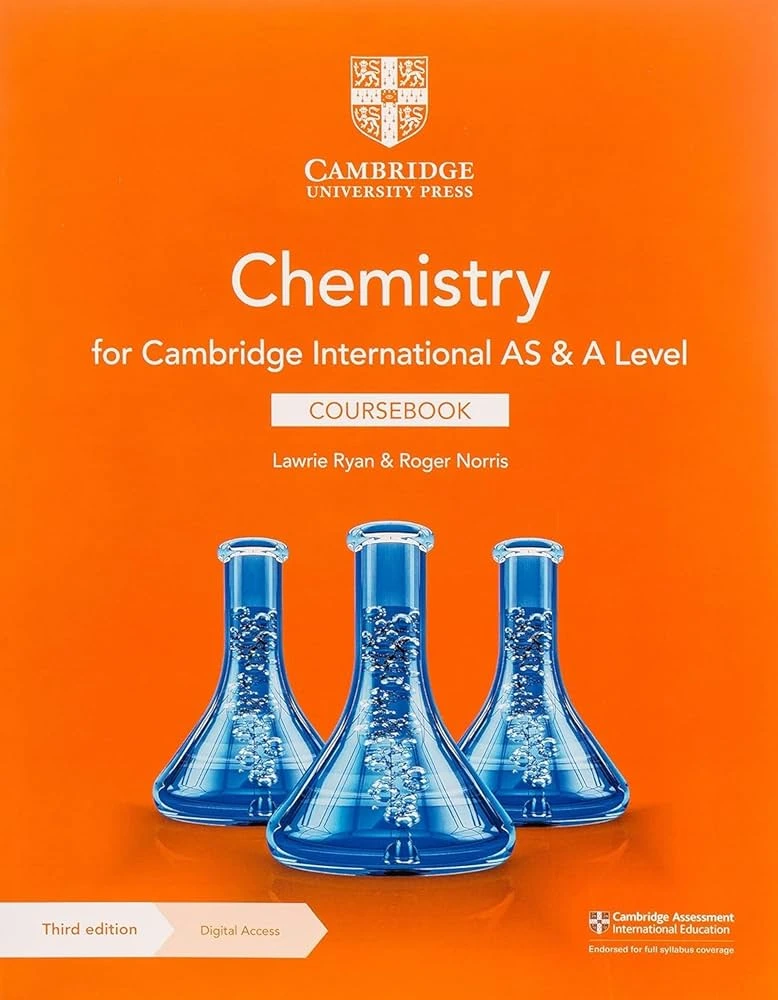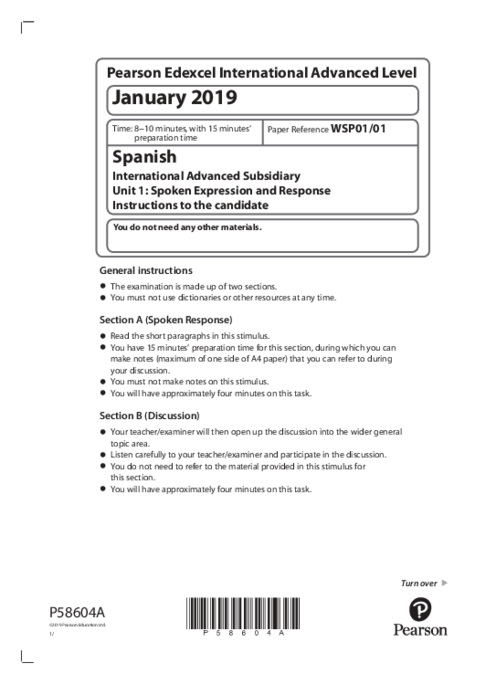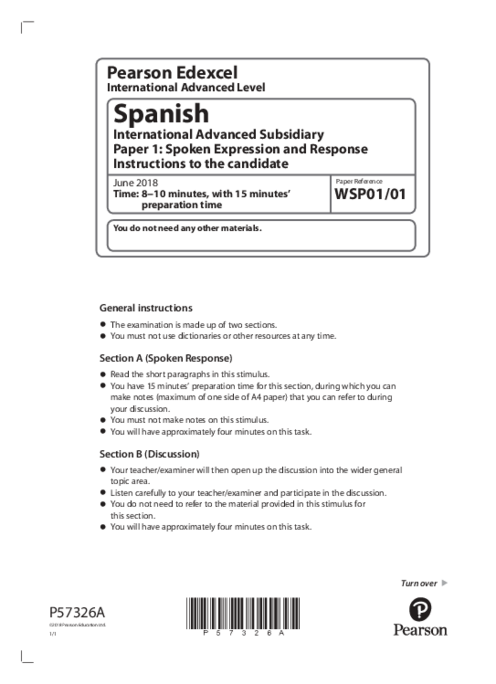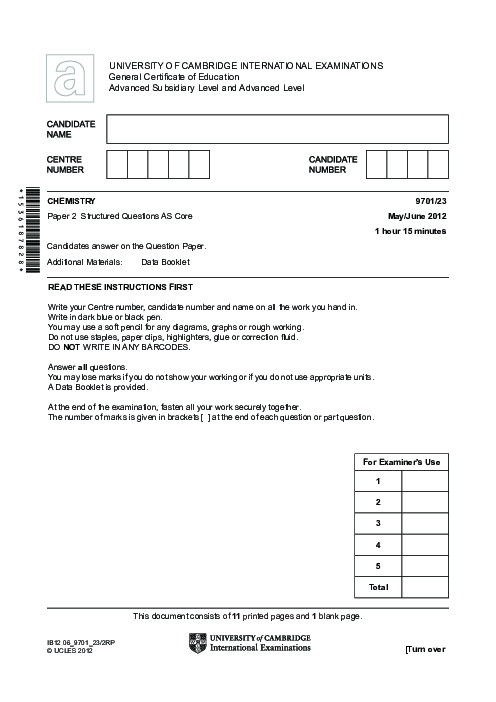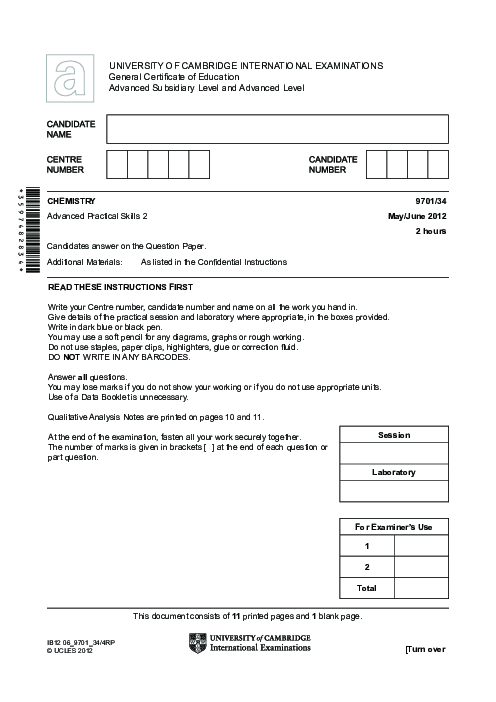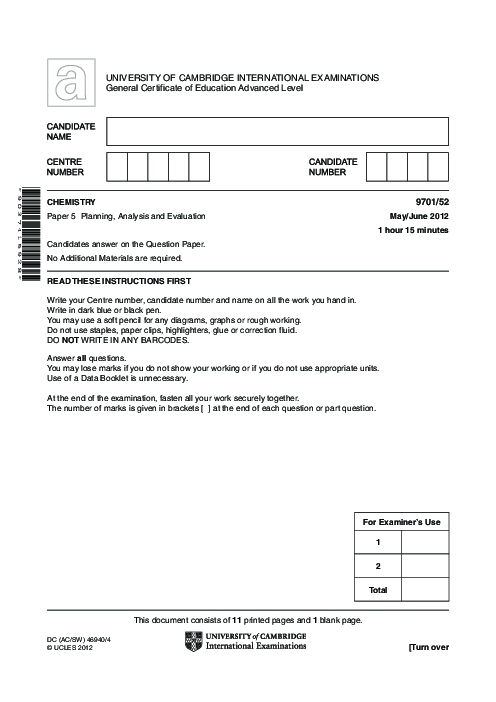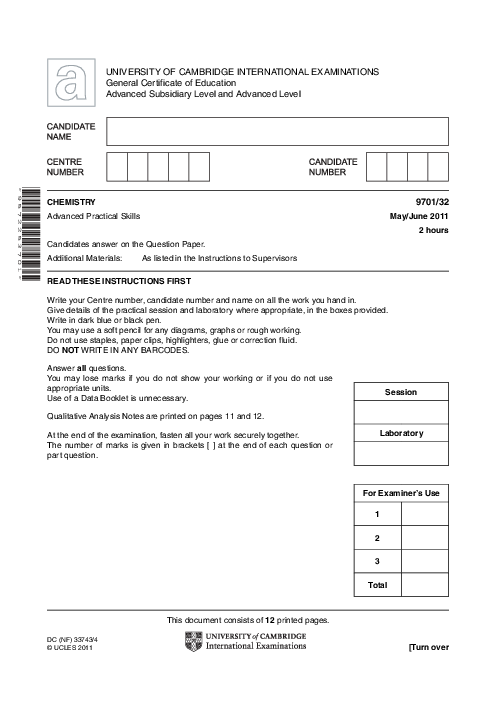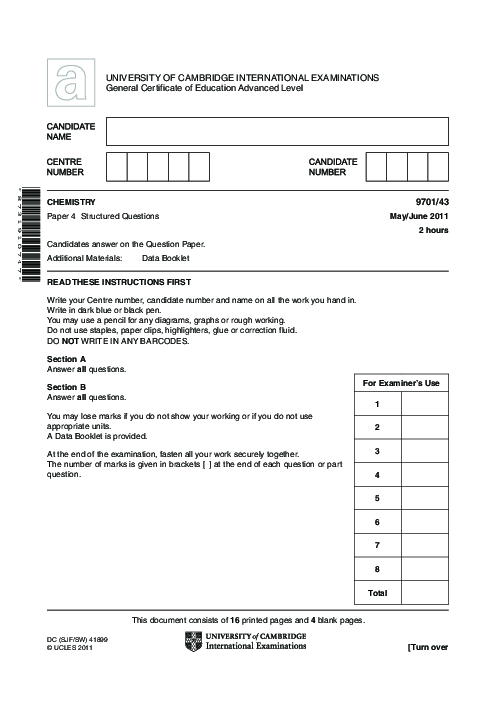Chemistry 9701/43 May June 2010 | Cambridge AS Level Past Papers With Mark Scheme
1. Phenacyl Chloride Nucleophilic Substitution: The reaction with NaOH(aq) involves phenacyl chloride reacting to form phenacyl alcohol and sodium chloride. The reaction order with respect to the reactants is deduced from experimental data showing how concentration affects reaction rate.
2. Order of Reaction: By analyzing the provided data, the order with respect to each reactant (phenacyl chloride and NaOH) is determined, leading to the overall rate equation and a proposed mechanism with electron pair movements.
3. Comparing Reactivity of Chlorides: An experiment comparing the reactivity of CH₃COCl and phenacyl chloride with water is suggested, focusing on the speed of reaction and observation. The difference in reactivity is explained.
4. Group II Sulfate Solubility: The solubility of Group II element sulfates decreases down the group, with an explanation based on lattice enthalpies and hydration energies.
5. Enthalpy Calculations for Magnesium and Strontium Compounds: Using lattice enthalpies and hydration values, the solubility of magnesium and strontium hydroxides is calculated, leading to an analysis of solubility differences and behavior in hot water.
6. Calcium Hydroxide Solubility: The calculation of Ksp for Ca(OH)₂ based on neutralization with HCl is followed by predictions on its solubility in NaOH compared to water.
7. Electronegativity and Dipole Moments: The reasoning for the dipole moment differences in SF₄ and SiF₄ based on molecular geometry and electronegativity is explained.
8. Reactivity of BCl₃ and SiCl₄: The difference in reactivity with water is explored, with equations showing the hydrolysis of BCl₃ and SiCl₄.
9. Mass Spectrum Analysis of SiCl₄: Using mass spectrum data, the molecular formula and structure of an oxychloride product are deduced.
10. Oxidation States of Cr³⁺ and Mn²⁺: Electron configurations for Cr³⁺ and Mn²⁺ are provided, followed by observations and equations for the reaction between Fe²⁺ and KMnO₄ in acidic conditions.
11. Reactivity of Iron(II) Compounds: Using electrode potentials, the stability of Fe²⁺ solutions and oxidation of Fe(OH)₂ are explained.
12. Organic Reactions with MnO₄⁻ and Cr₂O₇²⁻: Predictions for the products of oxidation reactions using MnO₄⁻ and Cr₂O₇²⁻, including detailed reasoning and mechanisms.
13. Benzene Reactions: The nitration of benzene with sulfuric acid and the mechanism of electrophilic substitution are discussed.
14. Chlorination of Benzene: The reagents and conditions needed to convert benzene to chlorobenzene are given.
15. Substitution in Nitrobenzene: The synthesis of 4-chlorophenylamine from nitrobenzene is explained, including intermediate structures and reagents for each step.
16. Protein Structure and Stability: Primary and tertiary protein structures are outlined with explanations on disulfide cross-linking and interactions stabilizing protein folding.
17. Electrophoresis of Amino Acids: Observations from an electrophoresis experiment suggest the identification of amino acid species based on their movement and size.
18. Peptide Sequence Determination: The sequence of amino acids in a polypeptide is deduced from partial hydrolysis results, along with the identification of the amino acid with an ionic side-chain at pH 8.
19. Lead-Acid and Nickel-Metal Hydride Batteries: The function and reactions in lead-acid and nickel-metal hydride batteries are explained, including their advantages and disadvantages.
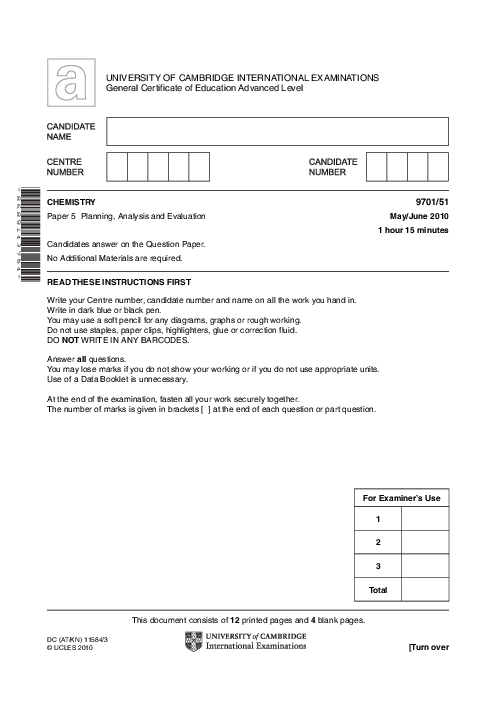
باز نشر محتواها در فضای مجازی، ممنوع است.

